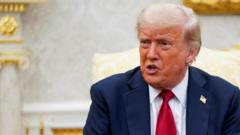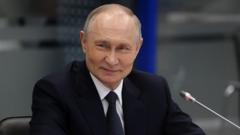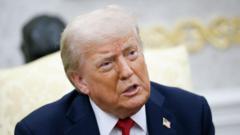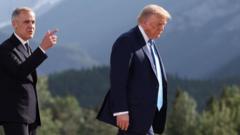Recent statistics reveal a deceleration in China's GDP growth, highlighting concerns over its economic stability amid ongoing trade disputes and property market difficulties.
China's Economy Faces Growth Slowdown Amid Trade Challenges

China's Economy Faces Growth Slowdown Amid Trade Challenges
China's growth rate declines as tariffs and property market troubles exert pressure on its economy.
China's economy is experiencing a slowdown, with recent trade disruptions and a persistent property market crisis affecting its growth trajectory. Official reports indicate that GDP expanded by 5.2% in the three months leading to June compared to the same period last year, slipping from 5.4% in the prior quarter.
Despite these downturn indicators, the economy has managed to avert a major crisis, helped by stimulus measures introduced by the Chinese government and a temporary trade peace with the US. The National Bureau of Statistics claimed the economy has "withstood pressure and made steady improvement despite challenges."
Key contributors to growth have included a 6.4% increase in manufacturing propelled by rising demand for technological innovations such as 3D printing devices and electric vehicles. The service sector also exhibited resilience, showing growth in transportation, finance, and technology.
However, retail sales painted a mixed picture, with growth waning to 4.8% in June, down from 6.4% the previous month. Additionally, data released on Tuesday showed that new home prices in China dropped at their steepest rate in eight months, suggesting that the real estate sector remains in distress despite governmental initiatives aimed at stabilizing property prices.
Some economists predict that China may fall short of its annual growth target of "around 5%", raising questions about the extent of this shortfall. Dan Wang from Eurasia Group believes the country could maintain a minimal growth rate of 4%, which is perceived as politically acceptable.
The escalating trade conflict between China's President Xi Jinping and US President Donald Trump has led to significant tariffs, with the US imposing a 145% levy on Chinese imports, while China retaliated with a 125% duty on American goods. Following negotiations in Geneva and London, these tariffs were postponed, with both nations set to finalize a long-term trade agreement by August 12. Moreover, the US has also imposed heavy tariffs on countries that maintain close economic ties with China, further complicating the trade landscape.



















